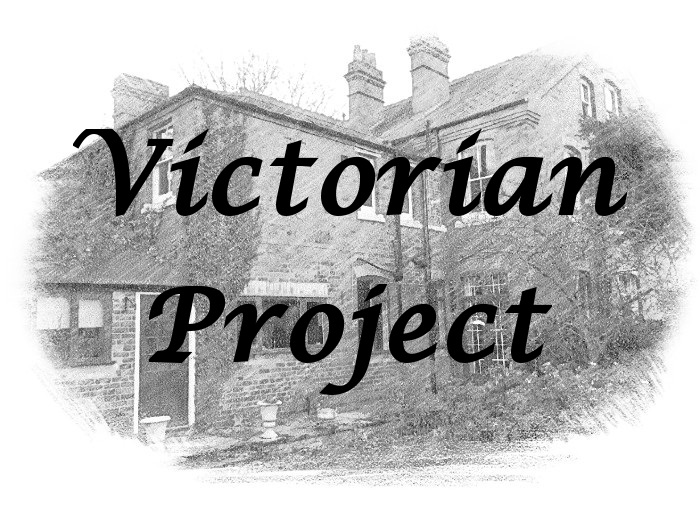Due to the age of Victorian properties it is only natural to want to seek professional guidance as to the condition of the house and whether there are any hidden nasties you should be aware of. With different surveys available and high associated costs it can be difficult to know what to do. With our property purchase we were certainly in this position and opted for a RICS accredited building survey. In this article we will look at the types of house survey on the market and examine what we got and didn’t get from our report.
What is the Victorian Project all about? Find out here.
Please note that this article is based on our experience of having a building survey carried out. No two companies are the same and your experience may be very different.
Types of House Survey Available
Generally, there are two key types of house survey you can acquire prior to purchase…
Home Buyers Report
A Home Buyers Report is the cheapest of the surveys and comes in at around £350 – £400. It will assess the condition of a property and provide you with estimates of any general repair work that needs to be done including subsidence & damp issues. It is however only looking at the surface and does not delve deep into the construction of the property. Many mortgage lenders can offer a Home Buyers Report as part of the deal. This type of survey is sufficient for most modern properties where the expected condition is good. [See also: 10 ‘Gotchas’ when buying a Victorian House – Knowledge is Power]
Building Survey / Structural Report
This is the type of house survey that we opted for and is often the choice for someone buying a Victorian property. This is a far more extensive assessment covering many more areas with detailed explanations of the advised corrective actions. As the property will usually belong to someone else before purchase they will not remove floorboards or break into walls but the surveyor should be qualified enough to provide an accurate opinion. Our building survey covered everything including subsidence, damp, local area drainage, water systems, electrical suitability and even available broadband! The building survey cost was just shy of £1000. [See also: Victorian Roof Repairs – Starting Point for any Renovation]
Where Can I Get A Building Survey & What Do I Ask For?
Like most people Google was our starting point and the internet is full of companies offering different types of property surveys. Our mortgage advisor had instructed us to look for companies with RICS accreditation (Royal Institute of Chartered Surveyors) and so we did just that. We quickly found that the building surveys on offer were not really standardised and that methods and report styles from each company were very different. Some focused on specific areas, some included photographs and other didn’t etc etc. [See also: Main Living Room Transformation (Before) -Decorating Begins]
What we did and I suggest you do too is ask each company to provide you with a report template prior to purchase. This way you can see exactly what the surveyor be looking at in advance. Also request a surveyor with specific knowledge of Victorian properties and how they are built. We didn’t do this and this caused us problems. More on this later… [See also: Ivy Invasion – Removal from Bricks, Roofing & Gutters]
What Did We Get From Our Building Survey?
Following payment our chosen surveyor obtained the keys to the property from the estate agent and spent a full day at the house carrying out the assessment and taking photographs. Around a week later we received a 133 page PDF document showing all of his findings. The document covered the following areas…
- Property Information – estimated year of build, listing status, general state, mains services available, the local authority the house falls under, the heating system, renewable energy services available, local broadband services & tenure etc.
- Damp Assessment– detailed breakdown of the signs of damp throughout the property.
- Photographs – a mass of photographs from all areas of the property.
- Floor Plan – showing all dimensions of the property.
- EPC – a copy of the Energy Performance Certificate.
- Insurance Cost Estimates – expected rebuild cost for a property of its type & age.
- Access & Rights of Way Summary – details of any shared spaces.
- Tree Preservation Orders (TPO) – details of any protected trees.
- Drainage System Overview – location of the sewage system.
- Boundaries Detail – taken from the governments register.
- Health & Safety Assessment – gas, electrical, risk of falls, unsafe fittings, infestations, asbestos etc.
- Environmental Issues – flood risk, geology, invasive species and mining etc.
- Visual Assessment – roofs, chimneys, walls, windows, exterior doors, joinery & finishes.
- Roof Spaces – assessment of attic spaces and inside roof condition.
- Ceiling Assessment – looking for bowing & cracking.
- Wall Assessment – condition & moisture reading checks.
- Floors Assessment – looking for sagging & unevenness. Lower floor joists from cellar.
- Chimney Breasts – looking for dampness, lack of support & failed lining.
- Bathroom – testing of all sanitary fittings
- Neighbourly Matters & Online Crime Check
- Main Issues Summary – including full descriptions of remediation works required.
So Is a Building Survey Worth It?
As mentioned our building survey was extensive and assessed a mass of areas that we would not be able to cover ourselves and so from that regard it was certainly useful. The biggest issue we found however was that we were fed a lot of incorrect information which almost put us off from buying the house! This was mainly to do with the damp inspection. [See also: Remove Stubborn Wallpaper – Stripping Back]
Following the completion of our survey we had a telephone conversation with the surveyor to discuss the key areas of concern. He sounded solemn in tone and advised that the house had a severe case of ‘Rising Damp’. To make things worse he added that the house really needed £30,000 spending on it to put this right and immediate engagement with damp specialists. We were told that the only way to stop the rising damp was to use a method known as Mechanical Insertion which involves taking the plaster in affected rooms down to the brick and installing a watertight membrane.
A little disheartened we decided to continue with the purchase and address these issues slowly over time. But… after living at the house for 6 months it was clear that this information we were given was wrong.
The trouble with surveys is that generally the people carrying them out have a script to follow provided by their employer. Whichever company you buy the survey from will have a template to complete and preferred methods of inspection. This is a ‘one size fits all’ script to apply to any house regardless of its age or building type. In the first 6 months of living at the house we had resolved ALL damp issues with no damp specialist in sight and for a total cost of around £1500 (mainly for roofing repairs).
It was very clear that the surveyor we used did not know a great deal about Victorian houses and particularly the way in which they are intended to work with damp. We spent hours researching this online and to find the appropriate ways of dealing with this. Damp issues in Victorian houses should NOT be resolved with modern damp treatments. We have produced a full article on Victorian house damp repairs which may help you. [See also: Fix Damp in Victorian Houses and the Common Causes]
Despite the above there are many good uses for a building survey and it helped us put together a full action plan for our rennovation.
Are House Surveys Worth It – Roundup
So are house surveys worth it? The format and content of every building survey will be slightly different depending on who you instruct to carry it out. Our building survey was comprehensive providing us with a wealth of information on the property. It is true that a lot of the items highlighted above you could obtain yourself but it would take you a lot of time and effort to do so. Also a building survey does highlight defects that you may have overlooked.
The advice I give is do not be afraid to question the report and on the required works summary do your own research. Some of the advice we received was expensive, intrusive and not right for a Victorian house. Ensure that you seek a reputable company to carry out the survey and that they have knowledge of older properties. Note also that if your building survey does highlight any genuine defects then this can be used in price negotiations.






